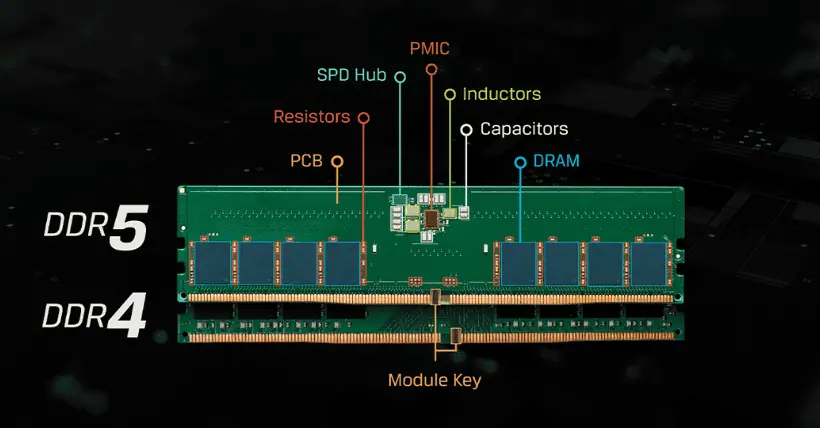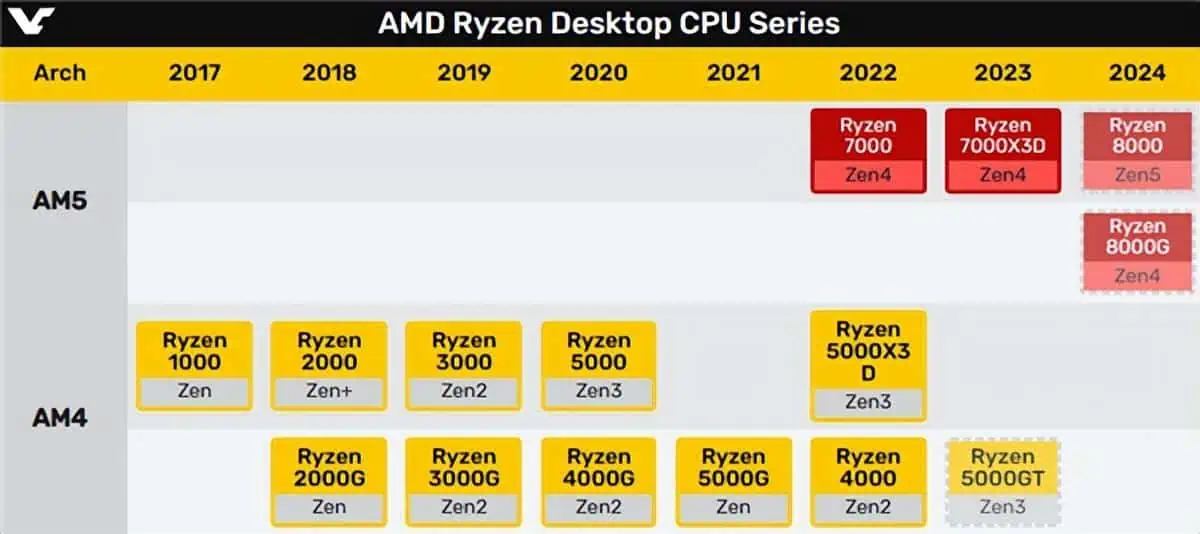The introduction of DDR5 memory at the end of 2020 was not smooth, but this is to be expected with any new generation of technology. Since 2014, system memory has been using what is known as DDR4 SDRAM, which has now developed into some impressive memory products with speeds of up to 5000MT/s and compact timing. Due to interface incompatibility, many people may be torn between DDR4 and DDR5 memory. For those leaning towards DDR5 memory, here are three reasons to buy it.

1. Price Decrease

When DDR5 memory was first introduced, the price was indeed high, especially compared to DDR4. Therefore, Intel supports both generations of memory, allowing users of the 12th, 13th, and 14th generation processors to switch between the two depending on motherboard support. AMD, on the other hand, launched a new platform for the AMD Ryzen 7000 series chips, AM5, which has a new socket, supports PCIe 5.0 SSDs, and only works with DDR5 memory.

During the pandemic, chip shortages caused PC part prices to skyrocket to astronomical levels. DDR5 memory faced the same situation, launching at high prices. Over time and with the resolution of shortages, the prices of DDR5 memory have gradually decreased, with a 20-30% reduction for the same DDR5 memory. Now, a set of 32GB DDR5-6400 memory can be purchased for over 800 yuan. DDR5 memory is cheaper than when it was first introduced, but it is worth noting that memory chip prices have increased under the control of original storage manufacturers like Samsung, Micron, and SK Hynix, and DDR5 memory has seen a certain increase compared to last year.
2. Continuous Performance Improvement

When DDR5 memory was introduced, its frequency was about 4800MT/s with a timing of CL40, and the transfer rate far exceeded the speeds that DDR4 could achieve with automatic overclocking, but the latency and timing were not satisfactory, limiting the overall performance improvement of DDR5. In memory production, it is important to make the modules run as fast as possible, with as low a voltage as possible, and with compact timing to reduce latency. This is why, for those using older systems or even new Intel CPUs, the fastest DDR4 memory is a better choice.
Although DDR5 memory still has higher latency compared to DDR4, this generation of memory has only been around for three years, so manufacturers have plenty of time to continuously improve overall performance. With AMD’s ongoing efforts to enhance the performance of integrated Radeon graphics cores in APUs, DDR5 memory becomes crucial for those considering APUs instead of dedicated graphics cards.
3. Future Trends

Just like previous DDR4 memory, DDR5 is gradually replacing the previous generation to become the market mainstream. AMD has already started using the new generation of memory, and it is foreseeable that Intel will follow suit. As inventory decreases, it will become more difficult to find reasonably priced DDR4 memory, just like DDR3 memory over the past decade. Purchasing branded machines or assembling your PC will increasingly use DDR5 memory.
4. Words in the end
Motherboards supporting DDR4 memory are also gradually decreasing, especially as Intel prepares to abandon this generation. Having a motherboard equipped with DDR5 will make it easier to upgrade when newer, faster modules are released. If you are using a motherboard that supports DDR4 memory and plan to use it long-term, you can achieve performance upgrades by increasing memory capacity and speed. The previously expensive 64GB DDR4 memory has now dropped in price and will be more cost-effective.
Intel CPUs can support DDR5 speeds exceeding 6400MT/s very well, which is also the best speed for AMD processors. By updating the BIOS, memory stability can be further improved.

Disclaimer: This article is created by the original author. The content of the article represents their personal opinions. Our reposting is for sharing and discussion purposes only and does not imply our endorsement or agreement. If you have any objections, please contact us through the provided channels.



